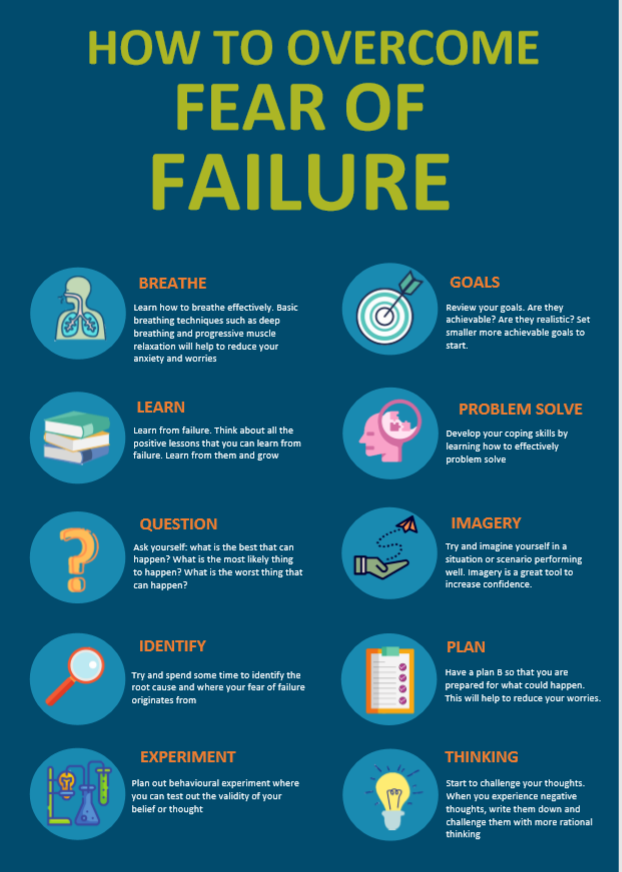Many of us are creatures of habit. I know I am. Whenever I drive into the city, I always like to park in the same car park. Whenever I go to the supermarket, I always like to find a park in the same area and I always drive to my daughters on the other side of the city the same way.
But recently, I was driving to my daughter’s to drop her home and she turned to me and said, “Mum, this is really the long way round, I could show you a much shorter route”. My first gut reaction was to say, “I like it this way”. But I stopped myself in time and instead asked her to direct me on the new path.
We often get caught in a bit of a rut and say to ourselves – “but this is the way I’ve always done it”. But if we never push ourselves outside of our comfort zones, then we will never get the chance to learn anything new.
The problem many of us face is the worry that we might fail if we try and don’t succeed. We get ourselves into the fear zone, get scared and then dash back into our comfort zone before making it to the learning zone.
So how do we overcome our fear of failure and “take the leap”?
Try these strategies to overcome your fear of failure and get into the growth zone:
Breathe
When we are afraid our brain hijacks us as we survey our environment for threat. As a consequence, our breathing often reflects our anxious state. But we can learn to breathe more effectively and tune down our Amygdala Hijack. We can slow down our breathing and ‘belly breathe’ (not chest breathe) and undertake 4 Square Breathing to reduce muscle tension.
Learn
Consider reframing the failure as a learn. It is not that we fail, we learn what new opportunities or pathways we can pursue. Consider all the positive lessons that you can learn from failure. We can learn from these and grow. You have an opportunity to “see the equals”
Question
When we are facing a new challenge, we often ask ourselves, “what is the worst that can happen”, but what we also need to ask ourselves is “what is the best thing that can happen?” We can also ask ourselves “What is the most likely thing that could happen?”
As we start to ask ourselves questions – what start to explore possibilities.
Identify
When it comes to considering a new challenge, we can try and identify where the root cause of our anxiety and fear of failure is actually originating from. What has happened to us in the past which might be “fueling” our fear of failure and how can we perhaps reframe this to consider a growth opportunity in trying a different pathway to perhaps dispute our original thought.
After all – a belief is just a thought that we keep on having.
Experiment
Why not try planning out a bit of an experiment to test out the validity of your thought process or your inherent belief. If you constantly state to yourself, “I am not a confident person”, then consider a little experiment to push yourself slowly out of your comfort zone and see how you go.
If you wanted to work on ‘flexing your confidence muscle” you could try using an Action Steps Pyramid
Consider the steps:
• Consider what you want to achieve.
• Select a behaviour you wish to change.
• Prepare a series of steps
• Confidence is a skill which builds slowly.
• Your confidence muscle gets stronger with each successful experience.
Use the Action Steps Pyramid to plan to get more confident to present in public.
Goals
Consider really taking the time to work on what it is you want to achieve. It is easier to take 1 step for 100 days that 100 steps in 1 day. So are your goals realistic and achievable.
You can use the GROW model to consider your goal setting and develop some “stickability” to your goals.
Problem Solve
If you think about it, fear is just a problem to be solved. If there is a barrier in your path? Our opportunity is to “think outside the box” and consider how we can break down the issue. What’s the old joke – “How do you eat an elephant?” – Answer – “One bite at a time”.
We can develop our coping skills and problem solving to recognise that our default response when a fear gets in our way becomes – “so what am I going to do about that”.
Visualisation
Have you ever heard the expression “self fulfilling prophecy”? If I walk toward a set of stairs chanting, “don’t trip up the stairs, don’t trip up the stairs”….. what’s likely to happen – that’s right – I’ll probably trip up the stair.
But I can also use this self-fulfilling prophecy in a really positive way. If I take some time to really see myself succeeding on a task I set myself, and I visualise every aspect of that task and the positive outcome I want to achieve then I can create that outcome.
Don’t think visualization really works? Ask someone opposite you to cut a lemon in half in front of you and then suck on the lemon while you are watching. I bet your mouth pulls back imagining the sourness and you get a burst of salvia in your mouth watching the experience. But you didn’t suck on the lemon – you just visualised it and your body took over and did the rest.
Plan
Plan for success, but you don’t have to engage in blind optimism that it will just all turn out. Plan realistically. Make small steps that are achievable and it can sometimes help to problem solve and have a Plan B which can raise your confidence knowing you have an inbuilt safety net ready at your disposal if you need it.
Thinking
Start to really challenge your thoughts. When you experience negative thoughts – or ANTs (Automatic Negative Thoughts). We can write them down and challenge them with more rational thinking.
A good way to test the accuracy or reasonableness of your thoughts might be to ask yourself some challenging questions. Consider asking yourself:
· What is the evidence for and against my thinking?
· Am I jumping to negative conclusions?
· How can I find out if what I’m thinking is actually true?
· Are there any other ways that I could look at this situation?
· What else could this mean?
· If I were being positive, how would I perceive this situation?
· What’s the best thing that could happen?
· Is there anything good about this situation?
· Will this matter in five years’ time?
· Is this way of thinking helping me to achieve my goals?
· What can I do that will help me solve the problem?
· Is there something I can learn from this situation, to help me do it better next time?
You can train your ANTs and make them PETs – Performance Enhancing Thoughts.
So now it’s your turn. What strategies could you try to “tame your fears” and overcome your fear of failure?
If you want to learn more about taming your fears, contact Michelle on 0412047590 or via email michelle@bakjacconsulting.com
Michelle Bakjac is an experienced Psychologist, Organisational Consultant, Coach, Speaker and Facilitator. As Director of Bakjac Consulting, she is a credentialed Coach with the International Coach Federation (ICF) and a member of Mental Toughness Partners and an MTQ48 accredited Mental Toughness practitioner. Michelle assists individuals and organisations to develop their Mental Toughness to improve performance, leadership, behaviour, and wellbeing. You can find her at www.bakjacconsulting.com or michelle@bakjacconsulting.com





































